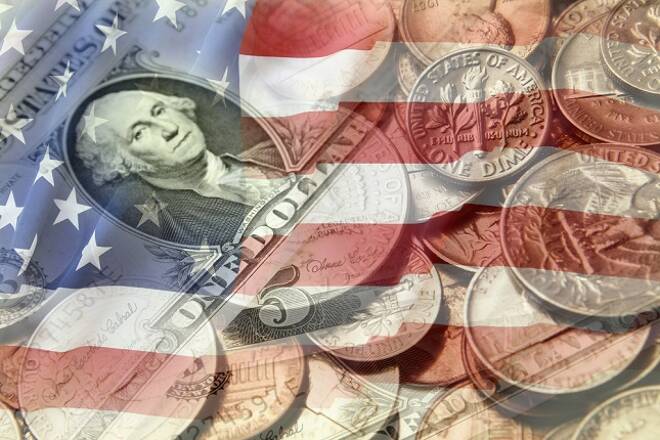Advertisement
Advertisement
COVID-19 Cases Hit 3m in the U.S and the Numbers Are Set to Continue Rising
By:
COVID-19 numbers have yet to shock the markets a 2nd time around. A spike in new cases across the U.S may begin to feed into the stats, however.
In the U.S, a new milestone of 3m infections was hit in the battle against the COVID-19 pandemic.
There has been nothing positive on the news wires for some time in relation to the coronavirus.
While there had been the hope of an effective vaccine, the virus appears to have more havoc to wreak on the U.S and the global economy.
The U.S in Contrast
At the time of writing, the total number of COVID-19 cases in the U.S sits at 3,097,538. According to Tuesday’s figures, the U.S accounted for more than a quarter of the world’s total number of infected.
Not only has the U.S been most severely affected but also has recorded the largest number of COVID-19 related deaths. As of Tuesday, the U.S had recorded 133,991 COVID-19 related deaths.
To put this into perspective, Brazil has the 2nd largest number of infections at 1,674,655. Brazil also has the 2nd largest number of COVID-19 related deaths, currently standing at 66,868.
To make a stark comparison, the percentage of the U.S population infected stands at 9.4%, while just 0.8% of Brazil’s population has been infected.
When looking at the mortality rate, the U.S mortality rate sits at 4.3%, versus Brazil’s 4.0%.
These figures ultimately reflect the success of the respective governments in curbing the spread of the virus.
The Administration and the Polls
Trump’s decision to push U.S states to begin reopening will be considered a grave mistake by many.
For the U.S administration, an about-turn on the reopening of the U.S economy could end Trump’s chances for office.
Looking at the FT’s interactive Calculator and polling data, Biden still looks set for an easy win in November. He has seen his share of the electorate college vote slip marginally, however.
It remains to be seen whether that slippage was as a result of the record rise in nonfarm payrolls in June. The good news for Biden and bad news for Trump, however, is that Trump’s share remains at 148 Electoral College votes.
The number of Electoral College votes that are now up for grabs has risen from 72 to 109. As was the case at the start of the month, even if Trump takes all 109, he would still fall short of the 270 needed to win.
These latest numbers are as at 6th July.
COVID-19 and the Global Financial Markets
Following a bullish start to the week, we’ve seen the appetite for riskier assets wane on Tuesday and Wednesday.
Economic indicators have continued to support a speedier economic recovery than initially expected.
The increased spread of the coronavirus will likely slow the pace of the recovery, however. For the markets, the only uncertainty is to what extent the recovery will slow.
One economic indicator that has continued to flash red amidst all the hype has been the U.S weekly jobless claims.
These figures have continued to reflect dire labor market conditions and have shown little sign of falling to pre-pandemic levels.
A continued upward trend in COVID-19 cases across the U.S will likely lead to a rise in these weekly claims. Lag or no lag, we have not seen sub-1m levels since 281,000 claims back in the week ending 13th March.
Can the markets pallet another 1.4m jump amidst the accelerated spread of the virus?
We can expect plenty of market sensitivity to tomorrow’s figures. More alarmingly, is news of the WHO reportedly acknowledging that there is evidence emerging of the airborne transmission of the virus.
Airborne transmission coupled with the continued reopening of the U.S economy does not bode well.
In reality, however, we have yet to see the global financial markets shudder at the prospects of a full-blown 2nd wave.
At some point, this may change, particularly if U.S State governors rebel and shut down the most populous U.S states.
According to Reuters, California, Hawaii, Idaho, Missouri, Montana, Oklahoma, and Texas, all reported new record highs on Tuesday.
The two largest U.S states, California and Texas reported more than 10,000 new cases each on Tuesday.
Importantly, the numbers have also shown that there has been no summertime decline in transmission.
About the Author
Bob Masonauthor
With over 28 years of experience in the financial industry, Bob has worked with various global rating agencies and multinational banks. Currently he is covering currencies, commodities, alternative asset classes and global equities, focusing mostly on European and Asian markets.
Advertisement
